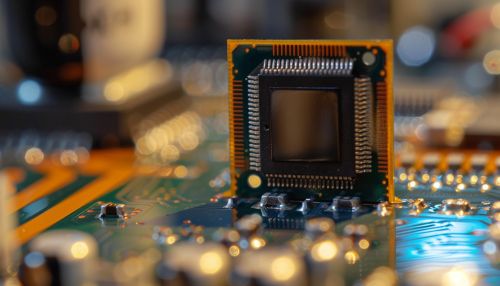Photodiode
Introduction
A photodiode is a type of semiconductor device that converts light into an electrical current. The current is generated when photons are absorbed in the photodiode, which is specifically designed to operate in reverse bias.
Principle of Operation
Photodiodes operate by absorption of photons or charged particles and generate a flow of current in an external circuit, proportional to the incident power. Photodiodes can be thought of as the opposite of light emitting diodes (LEDs), which convert electrical currents into light.
Types of Photodiodes
There are several types of photodiodes, including PN Junction, PIN, Avalanche, and Schottky photodiodes. Each type has its unique characteristics and applications.


PN Junction Photodiodes
PN Junction photodiodes are constructed with a p-type and n-type semiconductor. They operate in reverse bias condition where the p-side is connected to the negative terminal of the battery and the n-side to the positive terminal.
PIN Photodiodes
PIN photodiodes have a wide, undoped intrinsic semiconductor region between a p-type semiconductor and an n-type semiconductor region. The p-type region and n-type region are typically heavily doped because they are used for ohmic contacts.
Avalanche Photodiodes
Avalanche photodiodes (APDs) are photodiodes with a built-in gain mechanism. They operate at a higher reverse bias than other photodiodes, enabling them to provide higher sensitivity.
Schottky Photodiodes
Schottky photodiodes are metal-semiconductor devices more sensitive to light than other types of photodiodes. They have a lower forward voltage and faster recovery time, making them suitable for high-speed applications.
Applications
Photodiodes are used in many consumer and industrial applications, including optical communication systems, laser ranging, barcode readers, and optical remote sensing. They are also used in medical applications such as computed tomography, positron emission tomography, and blood glucose monitoring.
